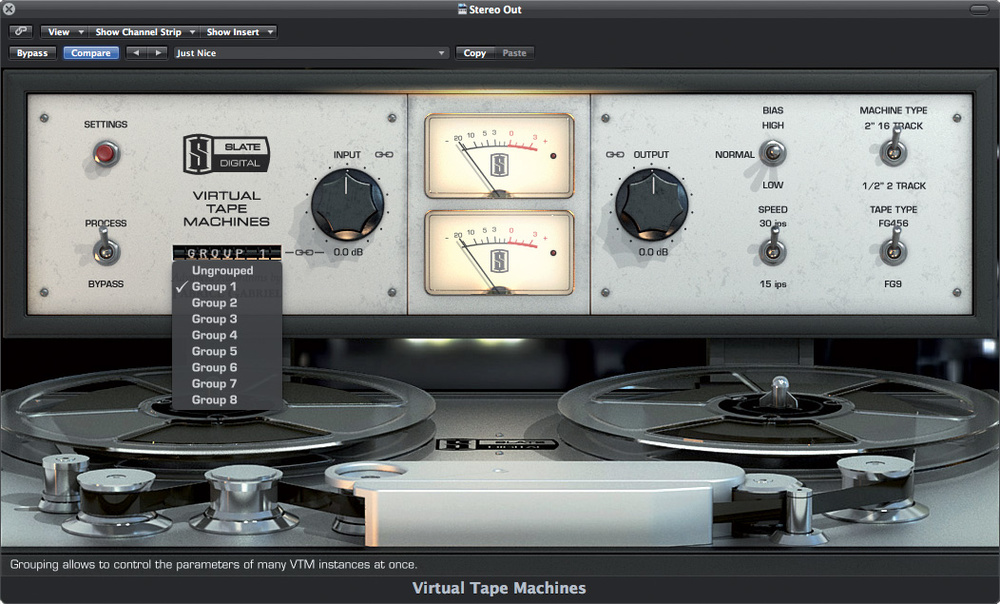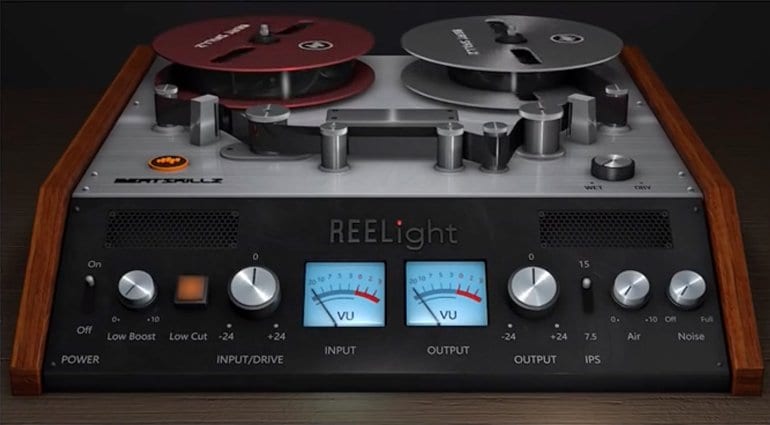

- #SOFTUBE TAPE STUDER FULL#
- #SOFTUBE TAPE STUDER FREE#
Input: Monitors the signal after passing through the tape machine’s circuitry, before it reaches the tape. They’re typically broken down into four options: Most tape machine plugins allow you to monitor the signal at different parts of the signal path. Flutter: Fluctuations in frequency above 4Hz caused by movement in the tape machine. Wow: Fluctuations in frequency below 4Hz caused by movement in the tape machine. Low flux settings mean distortion will occur earlier. Higher flux settings mean you can drive the input harder before causing distortion. Flux: Flux is another control that dictates when the signal will distort. Low/High Bias: Other plugins offer Low/High Bias controls, which causes the low-end to distort when set to Low, and the high-end to distort when set to High. Over-Biasing adds an extra 3dB of the ultrasonic signal, which many engineers prefer. Over-Bias: Introduces an ultrasonic signal to help prevent artifacts. Here are the most common “fine tuning” controls seen on tape machine plugins. Don’t forget to recalibrate every channel when you’re done! Instead of, you know, shutting down the session for an hour while you swap the heads and tapes on two machines. Which allow you to try a variety of settings across multiple channels. Many plugins simply offer a Hiss and Hum controls to reduce or remove the noise entirely.Īs an added bonus, many plugins feature group controls. The great part about tape machine plugins is that they offer many of the luxuries of analog recorders, with almost none of the drawbacks.įor instance, one of the worst parts about working with tape (aside from editing) was dealing with all of the noise. Here are the most common tape types, and their default calibration level. Generally, the lower the calibration level, the higher the signal level needs to be to cause saturation. Calibration levels determine how loud the incoming audio signal can get before distorting. “Modern” tape types tend to sound punchier, have extended headroom and less noise/saturation.Īlthough each of these tapes has a suggested “calibration level,” most tape machine plugins let you adjust them. Early tape types offer more color and thicker low-end response in exchange for more noise and distortion. Tape types are defined by the amount of input they can handle before distorting. Each tape type has “different frequency response, compression, and distortion characteristics.” The type of tape you use has an impact on the sound as well. Of course, the tape machines themselves aren’t the only variable in this equation. Significant high-end roll off and boosted low-end. 7.5ips: Typically considered more “lo-fi”. Slight midrange boost for more “bite.” More saturation and “attitude”, but more noise. 15ips: Low-midrange boost around 100Hz. 30ips: Typically considered more “hi-fi”. Slower speeds also add more saturation but tend to be noisier. Slow speeds tend to roll off the high-end and boost the lows and low-mids. Generally, faster speeds offer higher fidelity, less noise and more high-end. Tape speed is measured in inches per second, or IPS. Which frequency, and how much boost depends on how fast the tape is spinning. All tape machines offer a “head bump“, or frequency boost in the low end. The speed of the tape also affects the sound. Each tape size has its own unique sonic characteristics. However, 8-track, 16-track and 24-track recorders typically used larger 1” or 2” tape. So, 2-track mastering decks typically used 1/4”, 1/2” or even 1” tape. Generally speaking, fewer tracks requires a smaller tape size to maintain fidelity. Each of these machines effected the sound in different ways. Typically, studios would use multichannel tape machines for recording and then bounce the final mix to a 2-track master tape. Tape Machine Typeīefore DAWs were popular, tape machines were the primary method for recording audio. The exact effect a tape machine has on a track depends on a number of settings. 
Tape machines impart a unique combination of equalization, compression and saturation to audio signals. While most engineers don’t miss the hassles that come with using a tape machine, we all miss the sound. But back when engineers still routinely recorded to tape, they needed a pair of scissors and special tape to make cuts. We have keyboard shortcuts for making edits, crossfading and even quantizing.
#SOFTUBE TAPE STUDER FREE#
VST 4 FREE - Free Audio Plug-ins and Archives. It comes with most features the other plugins in this list have. SketchCassette is a VST inspired by 4-track cassette recorders. While I’m writing this the plugin is on sale for €26.10 (which is 64% off) so feel free to check out if this offer is still available.
#SOFTUBE TAPE STUDER FULL#
Synthesizers VINTAGE VST Instruments Full Bucket Music – Tricent mk III size 1.7 MB / 1.7 MB / 1.6 MB / 1.6 MB Tricent mk III simulates the classic KORG Trident mk IIfrom 1982.






 0 kommentar(er)
0 kommentar(er)
